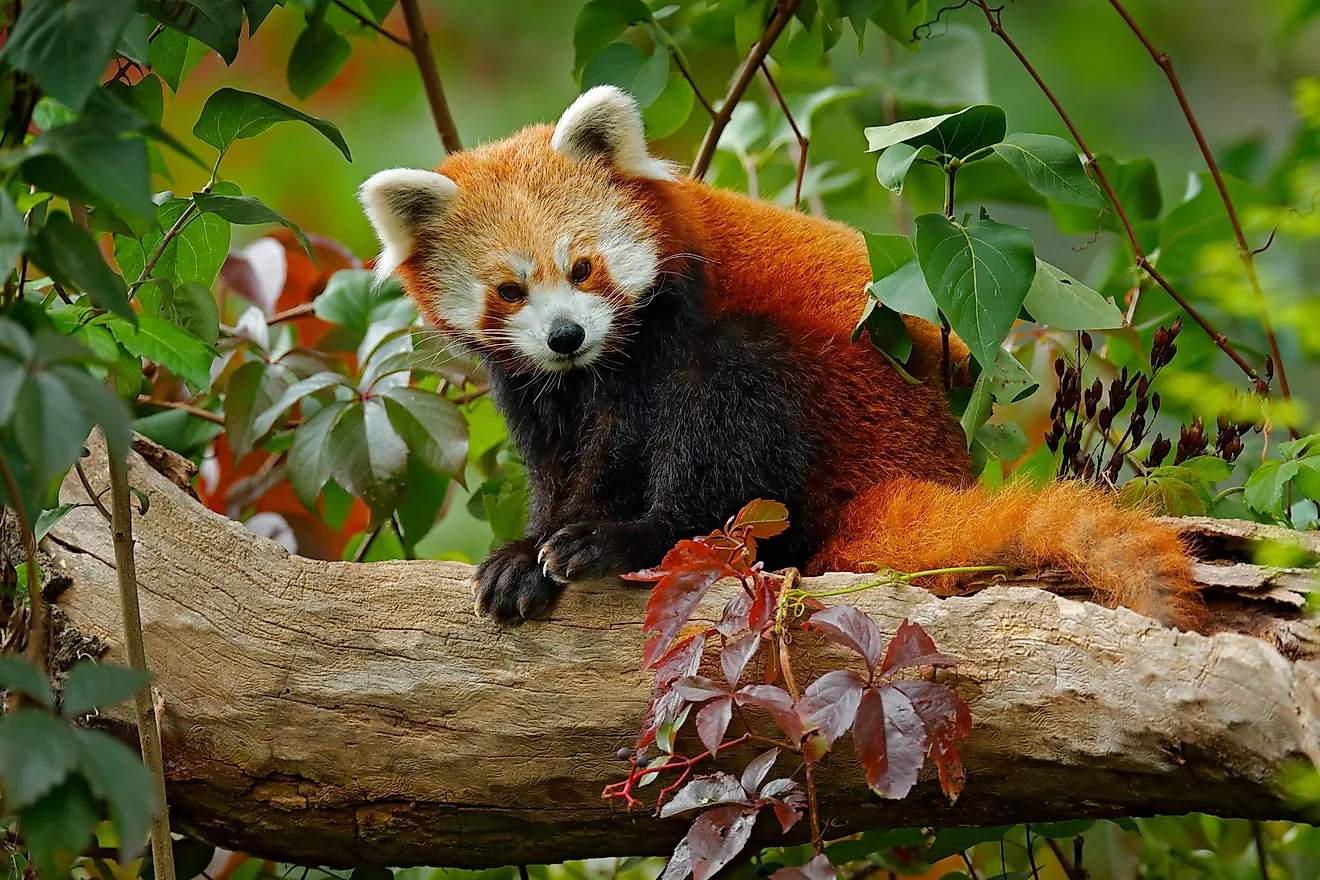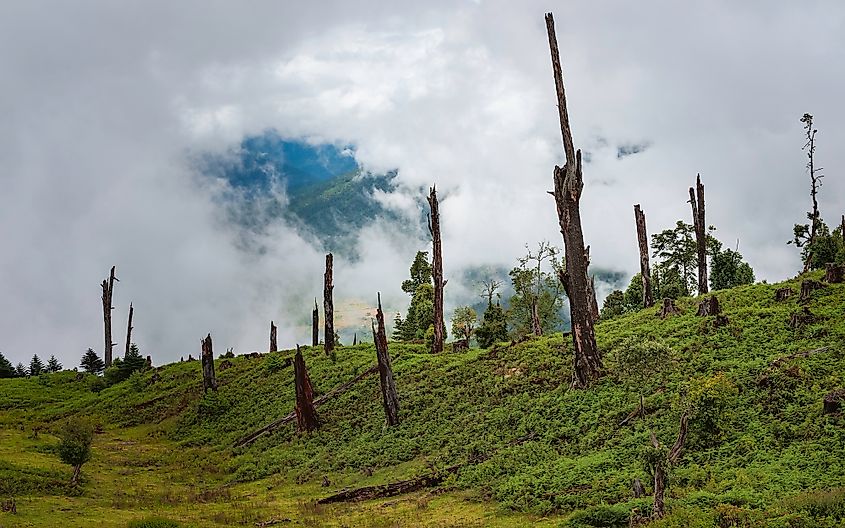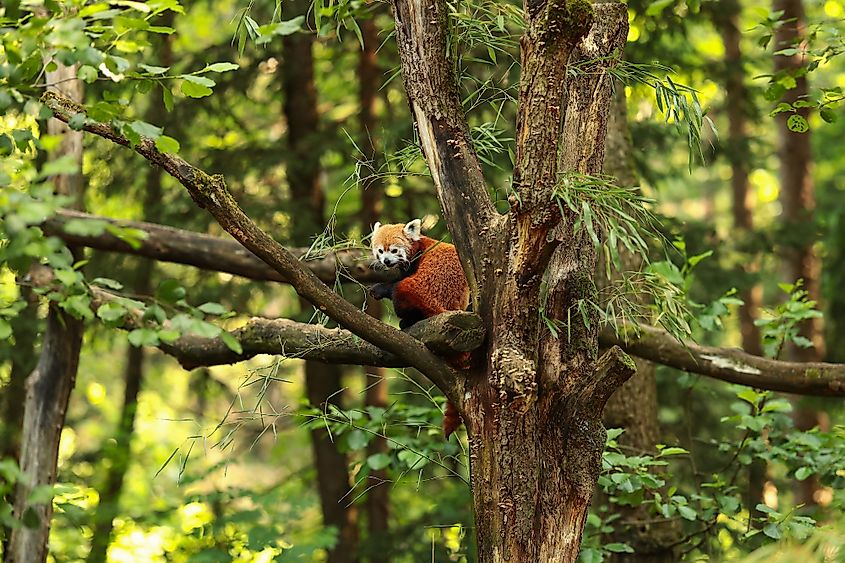Why Are Red Pandas Endangered?

- The red panda population has decreased by over 50% in the last 20 years.
- Deforestation, climate change, and capture for illegal pet trade are some of the biggest threats to red pandas.
- Only around 2,500 red pandas remain in the wild.
The red panda (Ailurus fulgens), listed as Endangered on the IUCN Red List, is a mammal native to the Himalayas in Asia. It is slightly larger than a domestic cat and has a bear-like body. It is named so for its thick russet fur. Its limbs and belly are black in color and it has a long, bushy tail.
Red pandas are mainly tree-dwellers and herbivorous in their food habit. Bamboo is their most preferred food. These animals are mainly found in the Himalayan temperate forests. Their range stretches from western Nepal to China’s Qinling Mountains in the Shaanxi Province. Extant populations of the species are found in India, Nepal, Bhutan, Myanmar, and China.
The red panda faces numerous threats in its range that has nearly extirpated the species. The following are the factors that threaten the survival of the red panda:
- Illegal Capture And Trade
- Depletion Of Himalayan Bamboos
- Illegal Logging
- Threat From Canine Distemper
- Naturally Low Birth Rates
- Natural Disasters And Climate Change
- Low Awareness About The Red Pandas
Illegal Capture And Trade
The red panda is illegally captured or killed for various purposes. According to a report by TRAFFIC, the sale of red panda meat is widespread in the southern provinces of China despite the government’s efforts to ban the sale. In 2009, a business traveler was reportedly offered meat from a caged red panda at a restaurant in Guangdong, China.
The animal is also hunted for its body parts that are used to prepare traditional medicines in China. Although the traditional hunting of the species for its pelt has been largely curbed, occasional reports of the illegal sale of fur and fur parts of the red panda do surface even today.
Another looming threat is the capture of the species for the illegal pet trade. According to a report by National Geographic, red pandas could be the next black market pet. In a shocking incident on January 13, 2018, three red pandas were rescued in Laos from a van about 10 miles from the Chinese border. They were possibly captured live for the exotic pet trade. Experts fear that incidents of this kind might grow in the future. The illegal pet trade not only reduces the population of a species in the wild but also kills many animals. Most of them die during transport due to physical trauma and stress.
2. Depletion Of Himalayan Bamboos

Himalayan bamboo is the dietary staple of the red panda. However, the plants are highly susceptible to environmental threats. When canopy cover is lost to logging or clearance of land for human settlements and agriculture, the bamboo is subjected to wind and water stress. The harsh conditions also destroy the seedlings of these plants. Overgrazing is also a threat to bamboo growth. The Himalayan forests are susceptible to all these threats and hence the red pandas, that are highly dependent on the bamboos, also suffer.
3. Illegal Logging

The activity of logging and the infrastructure built to facilitate the same makes wildlife highly prone to a variety of threats. Logging not only clears large patches of forests but logging roads make such forests accessible to poachers. Red Pandas are thus threatened by logging in their habitat. In the Emaw Bum region of Myanmar, logging has cleared forests in an area of around 5,000 square km within a single year (1999 to 2000). Red pandas living in such areas become vulnerable to the poachers.
4. Threat From Canine Distemper
With human populations growing faster than ever, the peaceful mountains are also filling up fast with human settlements. When humans inhabit an area, they clear forests and bring their domestic herds with them. Dogs are often used by herders to protect their herd from wildlife. Red pandas thus become victims of dog attacks. What is worse is that these dogs are usually not vaccinated and can transfer canine distemper to the red pandas. The disease is fatal to the species and can quickly eliminate the entire population of the species in the affected area. Canine distemper spillover into wild species has already been documented in the Indian fox.
5. Naturally Low Birth Rates
For a mammal of its size, red pandas have a relatively long gestation period of around 112 to 158 days. The litter size is also usually small numbering 1 to 2 (can be up to 4 in some cases). The cubs stay with their mother for about a year before venturing out on their own. They become sexually mature at about 18 months of age. Given the above facts, it can be said that the red panda has a low birth rate which makes it even more difficult to conserve its population in the wild.
6. Natural Disasters And Climate Change

The mountainous habitat of the red pandas is highly vulnerable to a number of natural disasters like landslides, earthquakes, floods, heavy precipitation, forest fires, weed infestation, etc. Although these threats have been in operation throughout the existence of the species, the severity and frequency of the disasters have been increasing in recent decades.
Human-induced environmental alterations can be held responsible for such consequences. Climate change has triggered changes in temperature and precipitation patterns. An increased frequency of floods and devastating forest fires are a result of such change. Illegal construction work on the mountains has destabilized the ground making it more susceptible to landslides. Red panda populations living in such rapidly changing environs are thus under great stress.
7. Low Awareness About The Red Pandas
Unlike tigers, lions, elephants, and other megafauna, these is little awareness about the conservation status of red pandas. Only few conservation programs are targeted towards the protection of this species. Research on them is also quite low.











